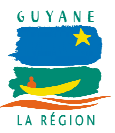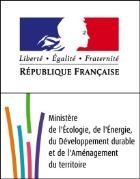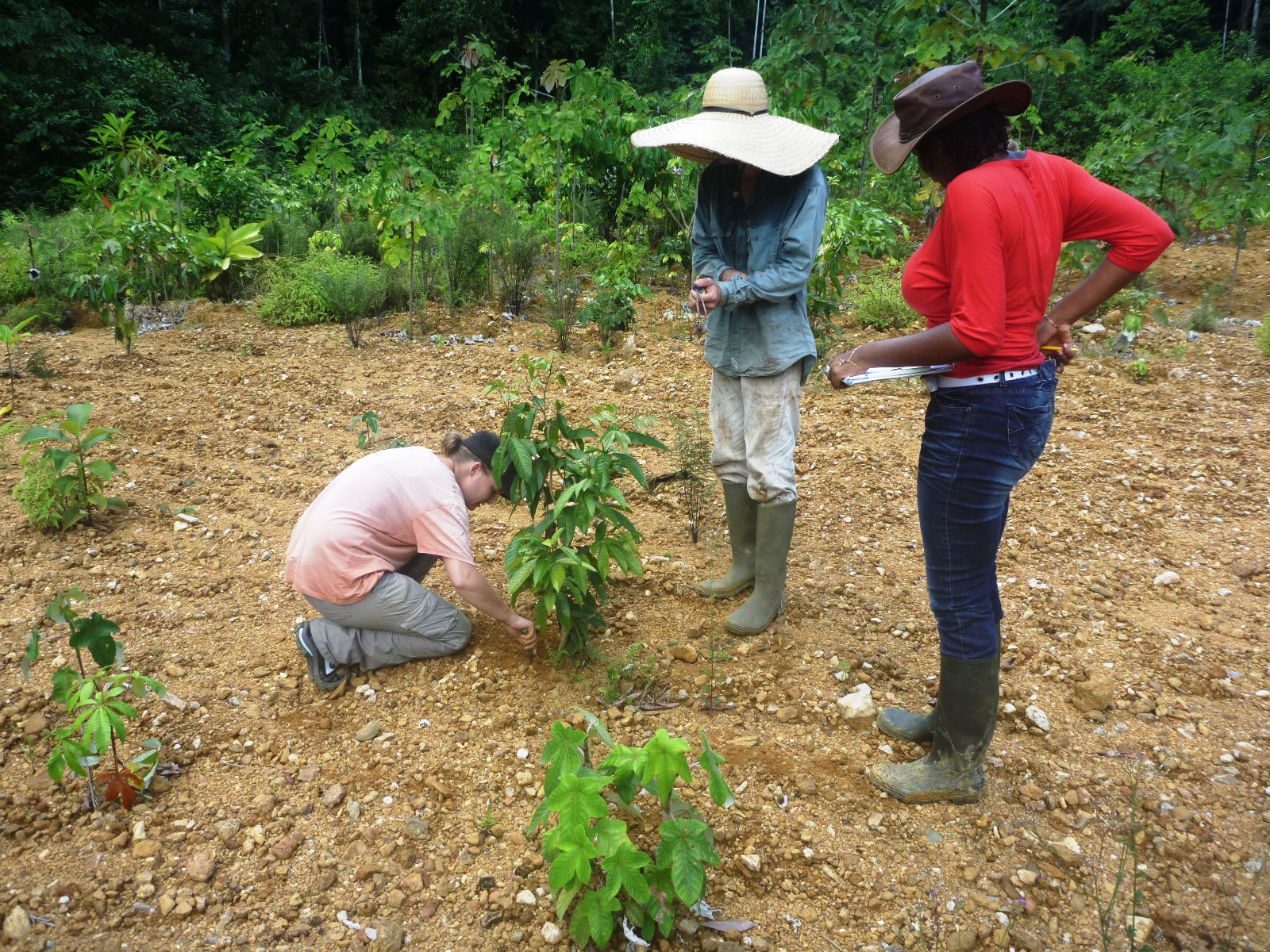
by Solicaz | Jan 25, 2016 | Advice & Training, News 2016
G.PAUL held a training session on the revegetation of mining sites at the Agricultural School of Matiti on October 25th, 2015.
It presented Guyafix project to the students and its progress on the ground, while explaining the benefits of nitrogen-fixing plants for soil that has lost all life due to exploitation.
The session covered the following themes:
- The soil, a dynamic and living system
- Mining regulations
- The results of the Guyafix project.
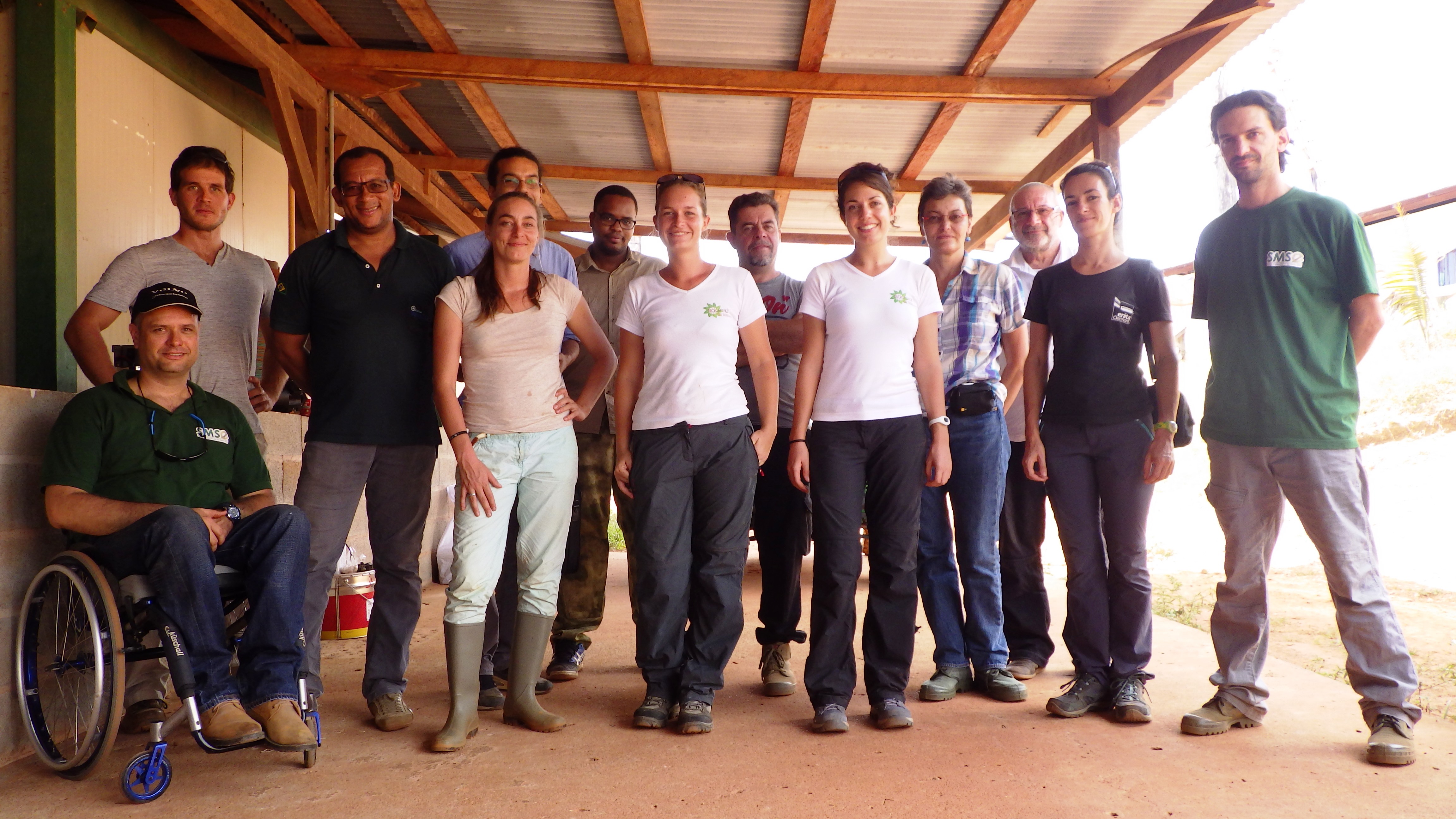
by Solicaz | Oct 30, 2015 | Uncategorized
On Wednesday, October 28, 2015, the final presentation of the results of the Guyafix (2012-2015) and MOM (2012-2014) projects to the CCIG (Chamber of Commerce and Industry of French Guiana) was presented to an official assembly of thirty people.
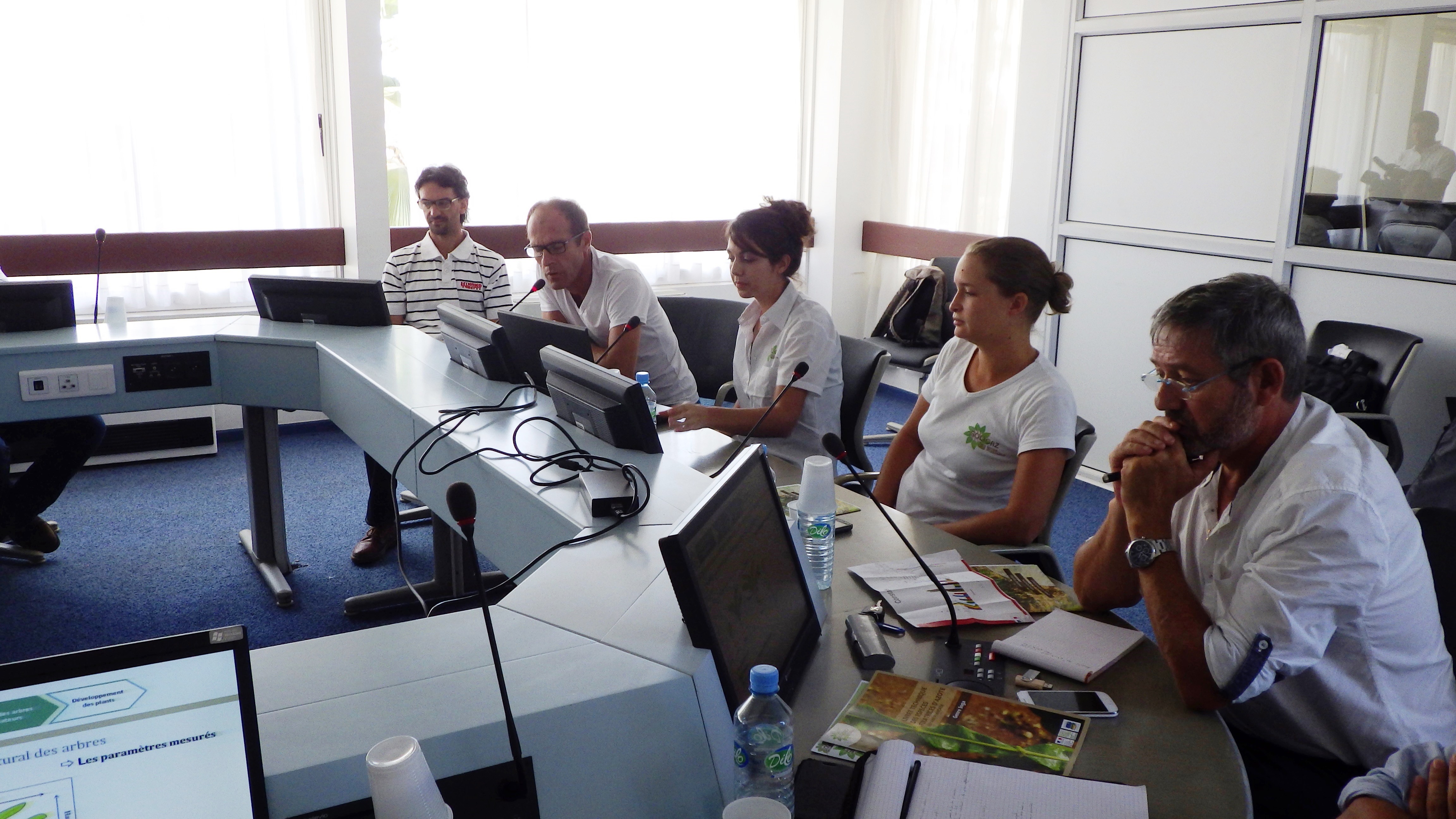
From left to right: A.CAILLEAU (SMSE), E.NICOLINI (CIRAD), G.PAUL and E.BRUNSTEIN (Solicaz), G.FAOUCHER (DEAL)
G.FAOUCHER, head of the DEAL mine department, introduced the projects with a brief reminder of the regulations concerning the rehabilitation and revegetation of mining sites: Gradually, during the exploitation, the sites must be rehabilitated and 30% of the rehabilitated surface must be revegetated; these projects were therefore intended to provide solutions towards this revegetation, which may prove difficult. Solicaz then presented its response to this problem, namely a “Selection of endogenous nitrogen-fixing plants from French Guiana for the restoration of degraded sites.”
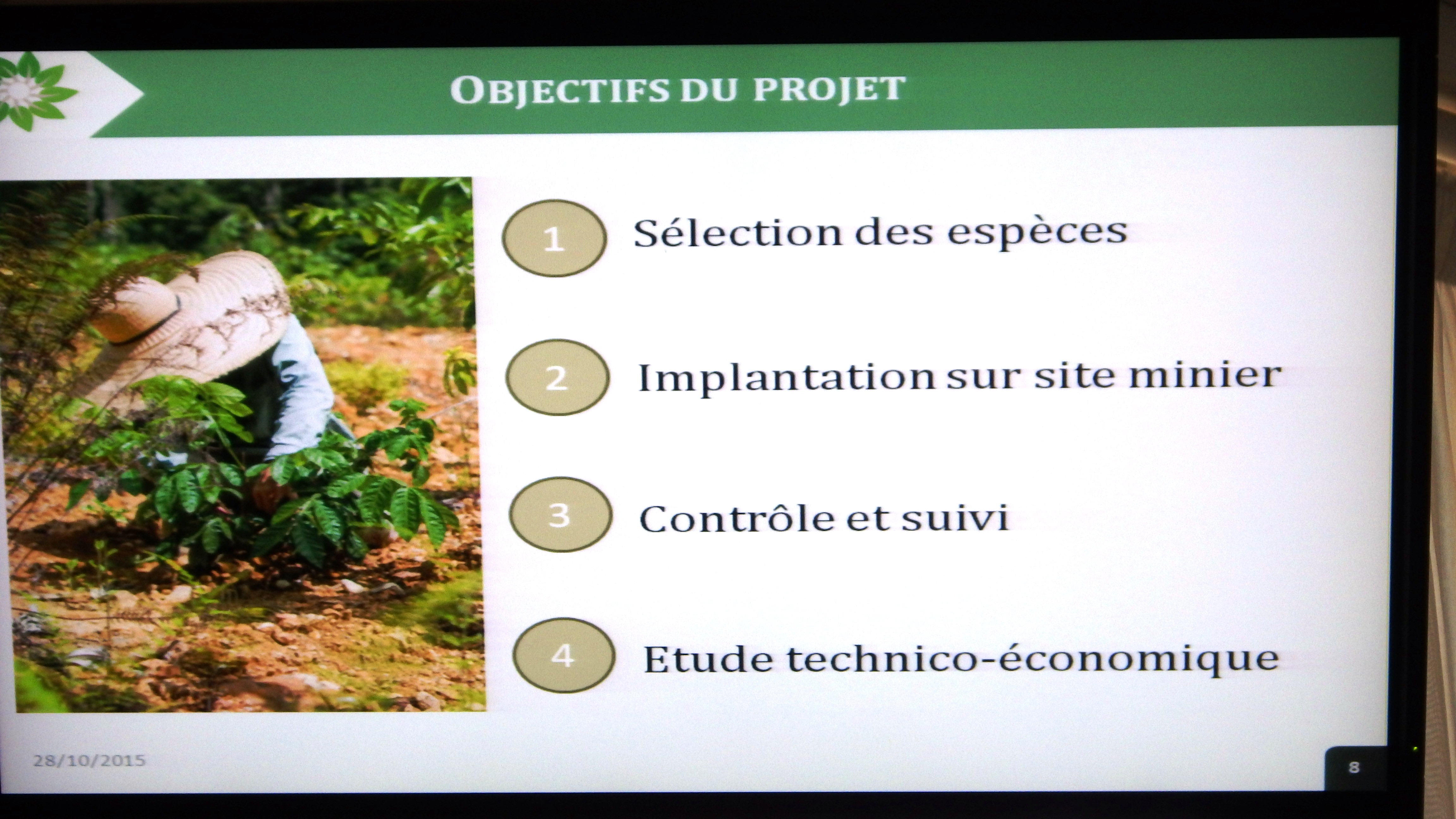
For the experiment, seven plants from French Guiana with the characteristics of being heliophilous, nitrogen-fixing, fast-growing and reproducible in nurseries were selected after tests for germination, propagation through grafting and efficiency of nitrogen fixation through nodules. The plants selected were: Clitoria fairchildiana, Inga leiocalycina, Inga ingoides, Inga edulis, Inga macrophylla, Inga pezizifera and Inga thibaudiana.
These species of Inga and Clitoria were then implanted on three plots of the SMSE (Saint-Elie’s Company of Mines) in order to track their transformation. A year later, the growth and vigor of the plants whose nodulation had been controlled by means of specific bacteria were already remarkable according to the CIRAD botanist, E. NICOLINI, who studied the architectural development of the plants. The physical, chemical and biological analyses of soils before and after the introduction of the nitrogen-fixing species have confirmed soil recovery, although the period is too short to certify a complete recovery of agronomic quality, which is visible at the end of six years. (Schimann, 2005).

Results on sites after two years of implantation
Finally, A.CAILLEAU, a geologist at the SMSE who followed and actively participated in the work of Solicaz shared his vision and total satisfaction with the results obtained after two years of planting. Nitrogen-fixing plants have fostered the establishment of new forest species in the areas in which they were established by enriching the soil and serving as shade for other plants.
Solicaz’s revegetation protocol is an efficient service that can benefit mining operators through autonomous or outsourced management.
The invitation to observe the revegetated sites was extended to the next day, Thursday, October 29, 2015 at the SMSE.

by Solicaz | Nov 4, 2013 | News 2011, Revegetation
Establishment of a production of nitrogen-fixing plants endemic to French Guiana for the restoration of degraded sites, carried out by Solicaz.
Appointment by the MEDDTL, as part of the National Strategy for Biodiversity 2011-2020.
Funded by: DEAL and the Regional Council of Guyana
Partners: PTMG, SMSE Mining Operator, Macouria EPLEFPA Farm, Guyane Consult, UMR Ecofog, and AMAP CIRAD.
The richness in gold of the subsoil in the French Guiana region coupled with an extremely rapid population growth generates an increase in deforestation which causes a loss of heritage of the only primary forest that Europe possesses each year. The increase in the current value of gold may accelerate this deforestation.
In an environment as disturbed as that of a mine after exploitation, the soil has lost all its fertility potential both in terms of nutrients (organic matter) and in terms of its capacity to produce it (i.e. it has lost the microorganisms capable of transforming this organic matter). Under these conditions, it seems difficult to revegetate a site without large supply of inputs and without major implementation work.
One method is to use certain plants which, because of their ability to metabolize nitrogen in the air, – thanks to their symbiosis with microorganisms, – can live on very poor soils without the use of nitrogen fertilizers. Acacia mangium, a legume native to Papua New Guinea and introduced to French Guiana several years ago has succeeded in this colonization of extremely poor soils because it can associate naturally with Rhizobium; rhizobium is widely found in French Guiana’s soils. However, the invasive character of Acacia mangium in an open environment engenders concern for large scale usage.
Previous works (Roggy et al 1999, Roggy et al, 1999 b, Roggy and Prévost 1999, Domenach et al., 2004) allowed us to identify in the French Guiana forest, species of trees endemic to this region and with qualities identical to those of Acacia mangium (rapid growth and/or moderate nitrogen fixers) and which could represent an alternative to this species.
The objective of the project is to provide the necessary tools for the establishment of a production chain of local nitrogen-fixing species adapted to the environment that can be used for its restoration or maintenance while meeting the needs of the sectors involved. For example, the mining and agricultural sectors could utilise the co-cultivation of these nitrogen-fixing species to minimize nitrogen inputs. Simultaneously, the installation of new trees could be used for the production of energy through biomass.
In order for this objective to be realized, the following is needed:
(1) the study of the production and multiplication of endemic nitrogen-fixing plants of French Guiana,
(2) the experimentation on degraded sites (e.g. mining sites) of the assembled species based on their functional traits for the restoration of biodiversity
(3) a study of the technical-economic feasibility for the establishment of a local production chain.
View the report
